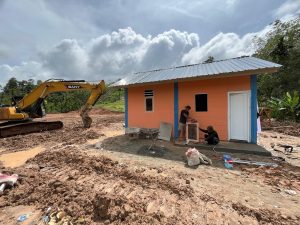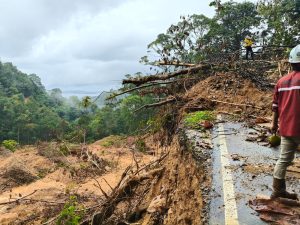Jakarta – The acceleration of downstreaming and industrialisation in various parts of Indonesia has created a significant surge in energy demand, especially from the industrial sector, according to the Ministry of Energy and Mineral Resources (MEMR), Wednesday, 9 July. The government noted that industry now accounts for nearly half of national energy consumption and continues to grow annually.
“Demand from the industrial sector is currently the most dominant, reaching 45.94% of total national energy consumption. This is growing at around 4.5% per year, and continues to increase along with massive downstream activities,” MEMR Deputy Minister Yuliot Tanjung said in an official statement.
The ministry’s data indicate that Indonesia’s total primary energy consumption in 2024 is expected to reach 1,276 million barrels of oil equivalent (BOE). Of this amount, the industrial sector is the largest user, far exceeding the transport and household sectors. “This is a signal that our industrial development is running, but on the other hand, it is a big challenge for the energy sector to fulfil it sustainably,” Yuliot explained.
The current national energy mix is still dependent on fossil fuels, dominated by coal at 40.37%, followed by oil at 28.82% and natural gas at 16.17%: 16,17%. Meanwhile, new renewable energy (NRE) is only 14.65%. According to Yuliot, there is still room for about 9% to pursue the national energy mix target.
Imports as short-term solution to production shortfalls
Indonesia is currently only able to produce around 580 thousand barrels of oil per day, while national demand reaches 1.6 million barrels per day. As a result, crude oil imports are expected to reach 900,000 to 1 million barrels per day by 2030.
Several strategies have been prepared, including the reactivation of 4,457 idle oil wells, the expansion of exploration to eastern Indonesia, and the application of new technologies such as fracking and horizontal drilling.
This has put pressure on state finances, with the realisation of energy subsidy expenditure in 2024 reaching Rp177.6 trillion and expected to rise to Rp197.75 trillion in 2025.
As part of its long-term strategy, the government is preparing to strengthen electricity infrastructure through the 2025-2034 Electricity Supply Business Plan (RUPTL). Some of the strategic projects to be launched include the construction of 69.5 gigawatts of power plants, a transmission network of 47,758 circuit kilometres, and substations with a capacity of 107,950 MVA.
Yuliot emphasised that strengthening infrastructure is crucial to boost national economic growth to 8% per year, as targeted by the President. (Hartatik)
Banner photo: Image generated by OpenAI’s DALL·E via ChatGPT (2024)














